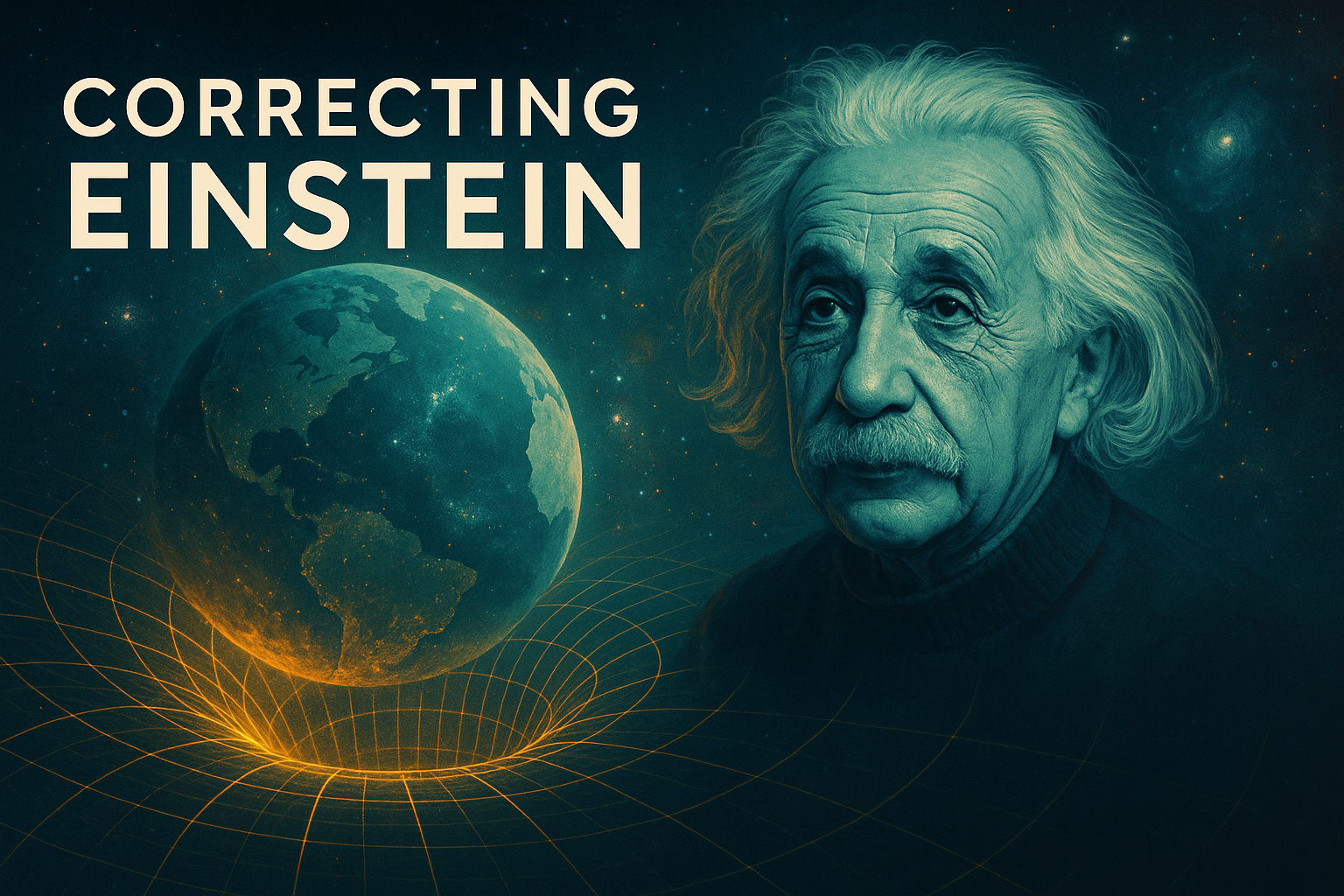Pattern Field Theory’s Correction of Einstein’s Relativity
How Pattern Field Theory (PFT) models spacetime and gravity beyond Einstein—while reproducing the correct Newtonian limit

Summary
General Relativity (GR) explains gravity as spacetime curvature. It is accurate in many regimes but breaks down at singularities and does not specify how spacetime emerges. Pattern Field Theory (PFT) treats spacetime, matter, and gravity as outcomes of motion organizing under constraint. GR is contained as a subsystem; in weak fields, PFT reduces to Newton-like behavior.
PFT: structural replacements for GR primitives
Key schematic relations are written below in HTML so they display reliably on the site:
- G
- effective gravitational field strength (emergent)
- M
- local motion magnitude
- D
- pattern density
- C
- curvature resistance
- γ
- proportionality constant
- S
- emergent metric proxy
- Pn
- pattern coherence at layer n
- Cn
- local curvature at layer n
- D
- dimensional density
- Tlocal
- local time rate
- C
- curvature
- M
- motion intensity
These are schematic relations used in PFT analyses. In weak-field, slowly varying conditions, the description collapses to an inverse-square attraction, consistent with the GR→Newton correspondence emphasized in recent work.
AFCL: even perfect numbers as closure counts
The Allen Fractal Closure Law (AFCL) links even perfect numbers to binary closure counts on a curvature-seeded 2-D lattice. We state it in plain HTML so it renders correctly:
For p such that (2p − 1) is a Mersenne prime, the value is an even perfect number. Examples: 6 (p=2), 28 (p=3), 496 (p=5), 8128 (p=7), 33,550,336 (p=13), 8,589,869,056 (p=17), 137,438,691,328 (p=19). In PFT, these count the unique undirected pair closures among N=2p anchors:
The AFCL chart on this site (Chart.js) plots these values on a logarithmic scale for quick inspection.
Relation to Einstein and current literature
GR remains the correct macroscopic description in tested regimes. PFT addresses what GR leaves open (emergence, singularities, and pattern-level structure) while reproducing Newton-like behavior where it should.
Predictions and checks
- Time-rate micro-variance correlated with pattern-density fluctuations (precision clocks across controlled density gradients).
- Small, specific lensing offsets at cluster edges attributable to non-terminal resonance features.
- Curvature-based light behavior in engineered settings without particulate assumptions.
Note on Einstein’s contribution
Einstein’s framework remains foundational. PFT builds on it by supplying an explicit substrate model for emergence, avoiding singularities and providing a single vocabulary—motion, constraint, closure—for cross-scale behavior.